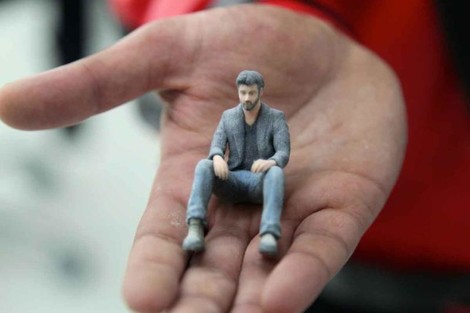Your podcast discovery platform
Curious minds select the most fascinating podcasts from around the world. Discover hand-piqd audio recommendations on your favorite topics.

piqer for: Global finds Globalization and politics Technology and society
Turkish journalist, blogger and media expert. Writes regular columns for The Arab Weekly and contributes to Süddeutsche Zeitung, El Pais and the Guardian. An European Press Prize Laureate for 'excellence in journalism' in 2014, Baydar was awarded the prestigious 'Journalistenpreis' in Germany by Südosteuropa Foundation in February 2018.
Sharia Strikes Back: How 3-D Printing Of Human Models Stirred Huge Outrage In Kuwait
The controversy caused by the advances in technology and dogmatic interpretations of religion has truly some unexpected dimensions and turns.
Now, the stage for the debate is Kuwait.
And it has to do with the 3-D printed models of human figures that started appearing on the markets, inciting Islamists' fury. Islamists claim these inventions drive children to adore them. In other words, the debate is all about whether or not these figures cause 'shirk' (idolatry), which Islamists dread will lead to worshipping of these figures.
The controversy started after Islamist member of the Kuwaiti parliament Mohammed Hayef al-Mutairi unleashed a wave of condemnation about the 3-D models through his Twitter account. “The manufacturing of these statues and figurines must be forbidden, as they have invaded the Arabian Peninsula. Complacency has reached a point where temples have been established in some Gulf states,” he tweeted ... Former Kuwaiti Minister of Justice and Endowments Nayef al-Ajmi, also posting on Twitter, said: “Making statues using modern technology is haram according to sharia. It should only be used within the limits of sharia, such as making educational models for medical schools or children’s games.”
Activists reacted with equal rage.
The head of the political bureau of the liberal Kuwait Democratic Forum, Ali al-Aoudhi, criticised the description of the models as “idols”. He stated that “what is happening is nothing but contempt for people’s minds and a new attempt to suppress freedoms and creativity under the pretext of religion.”
As the battle intensified, reports said that the 3-D printing company withdrew the production of human models.
The question now is whether or not this decision is temporary.
